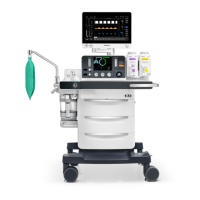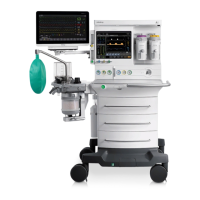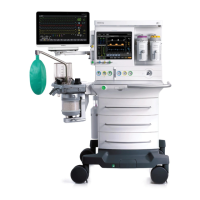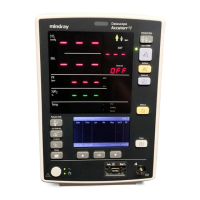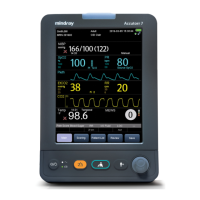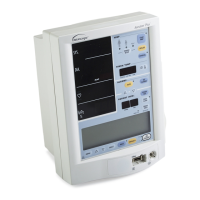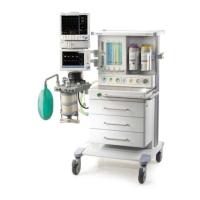A7™ Operating Instructions 046-004667-00 5 - 11
Operations Ventilation Modes
In the VCV mode, if tidal volume compensation has failed, the A7 Anesthesia System can
continue delivering gas stably but cannot compensate for the effects of fresh gas flow and
breathing system compliance losses.
In VCV and SIMV-VC modes, when inspiration pressure reaches Plimit, respectively, the
inspiration pressure is held.
FIGURE 5-10 Volume Control Ventilation (VCV) Tab
5.5.6.1 To Set VCV Mode
1. Select the VCV tab on the main screen.
2. Check that all VCV parameters are set appropriately.
If necessary, select the parameter softkey to edit the parameters settings (see FIGURE 5-10).
You can use the digital keyboard on the screen to enter the desired value, or continuously
press the or buttons to rapidly increase or decrease the parameter values.
3. Select the Set Mode softkey to confirm.
VCV parameters:
• Vt: Tidal volume
• Rate: Breath rate
• I:E: Ratio of inspiratory time to expiratory time
NOTE: The screen displays the calculated Tinsp when adjusting the I:E ratio.
• Tpause: Percentage of inspiratory plateau time in inspiratory time
• PEEP: Positive end-expiratory pressure
• Plimit: Pressure limit level
NOTE: Before activating a new mechanical ventilation mode, ensure that all
related parameters are set appropriately.
5.5.7 Pressure Control Ventilation (PCV)
Pressure control ventilation (PCV) mode is a basic fully-mechanical ventilation mode. In the PCV
mode, each time mechanical ventilation starts, PAW rises rapidly to the preset Pinsp. Then gas
flow slows down through the feedback system to keep PAW constant until expiration starts at the
end of inspiration. The tidal volume delivered in the PCV mode changes based on patient
pulmonary compliance and airway resistance.
In the PCV mode, you can set PEEP to improve expiration of end-tidal carbon dioxide and to
increase oxygenation of breathing process.
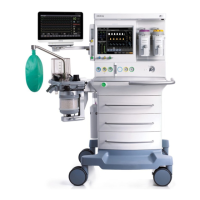
